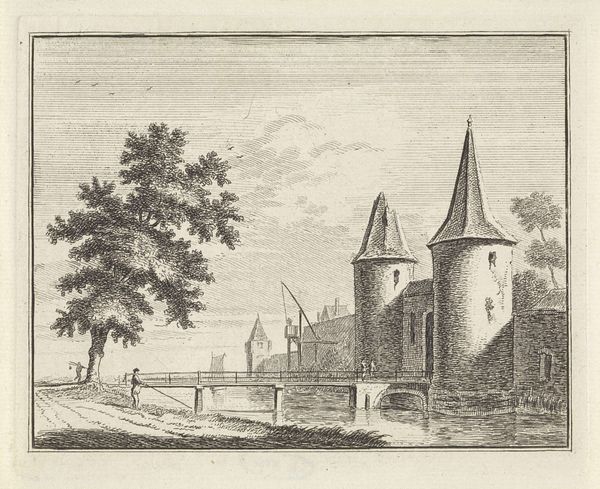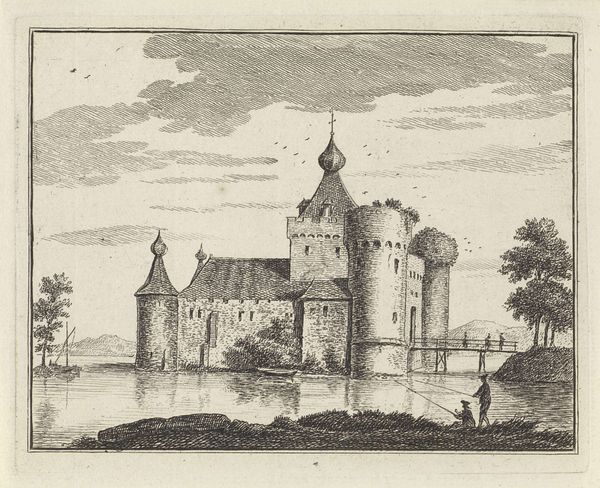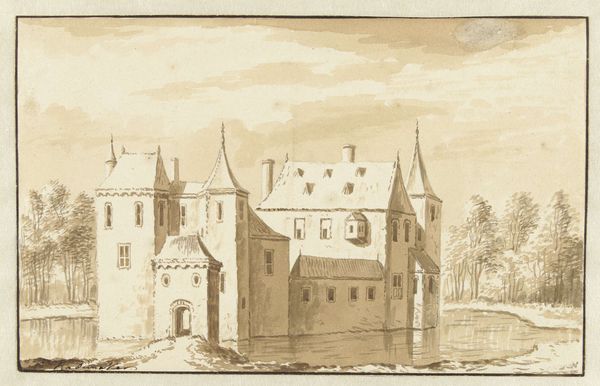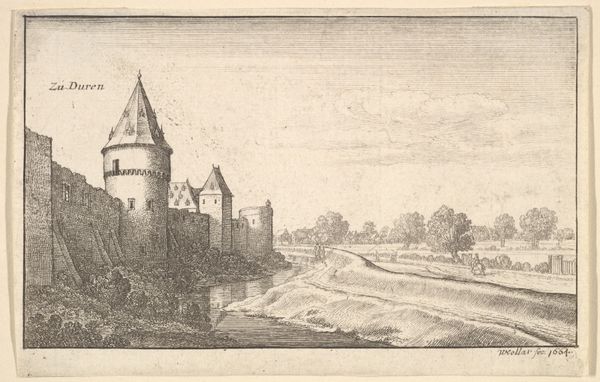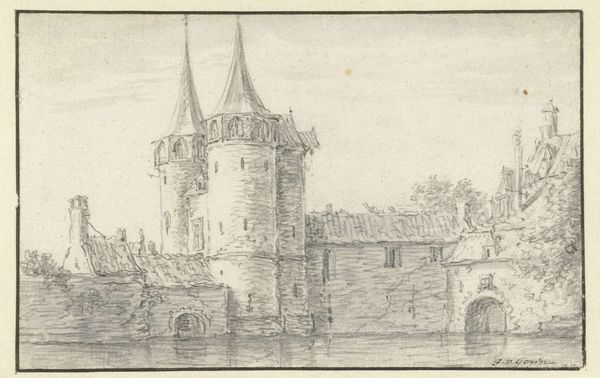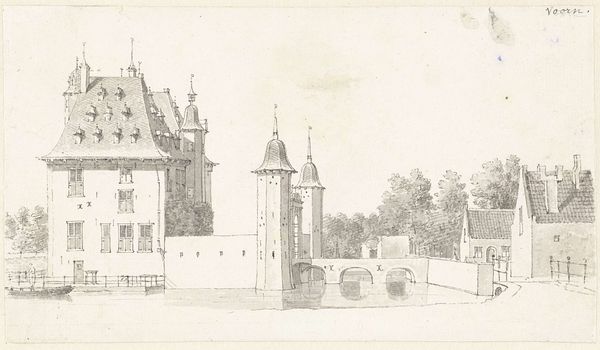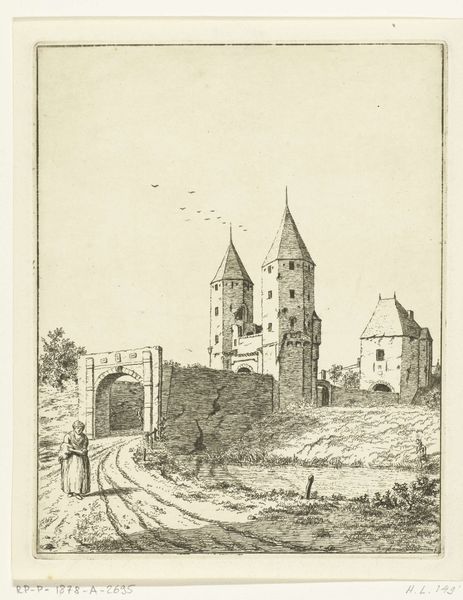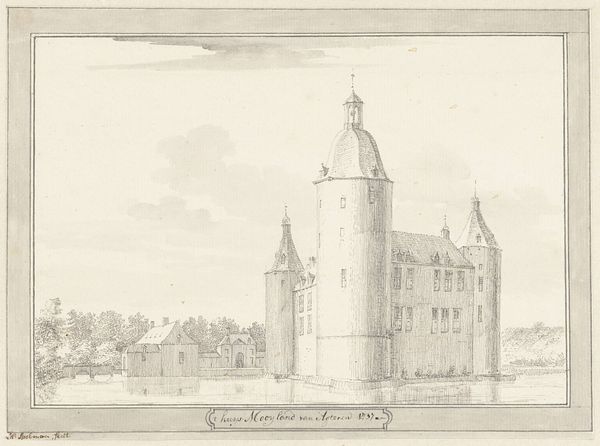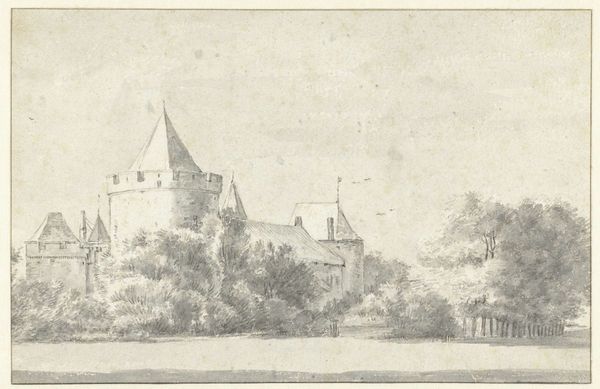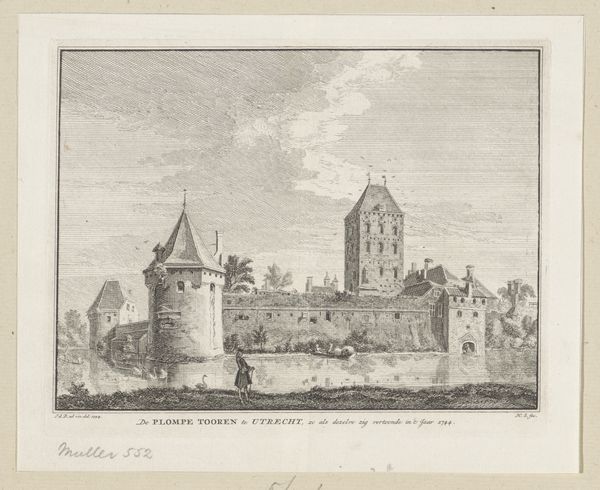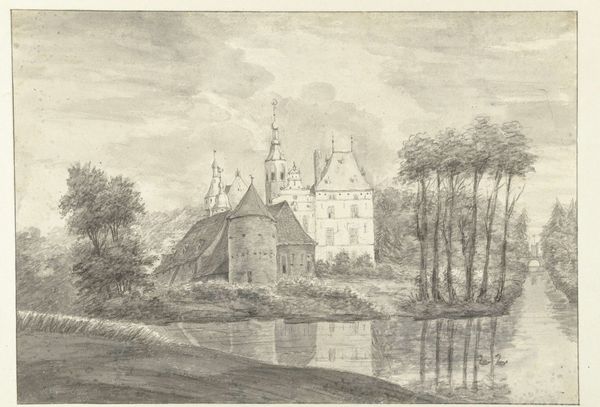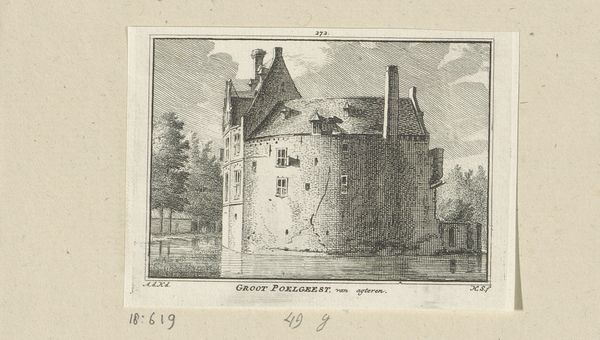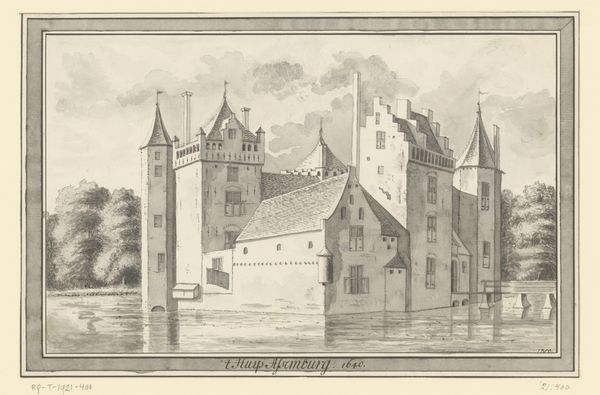
drawing, ink, pencil
#
drawing
#
medieval
#
pencil sketch
#
landscape
#
ink
#
pencil
#
cityscape
Dimensions: height 115 mm, width 188 mm
Copyright: Rijks Museum: Open Domain
Editor: So, this is Jan de Beijer's "Het slot te Abcoude," likely from 1750, and it's currently held at the Rijksmuseum. It’s a drawing rendered in pencil and ink depicting a moated castle. The muted tones give it this dreamy, almost wistful quality. What draws your eye when you look at it? Curator: My eye is drawn to the steeple; it's crowned by a weather vane, a potent symbol of change and adaptation. The castle itself, solid and imposing, represents the stability of power, tradition, and cultural memory. The weather vane becomes a commentary on that – that even the most steadfast institutions are subject to external forces, that they are ever-changing through the cultural influence. What do you make of the castle’s reflection in the water? Editor: It almost makes it seem as if the castle has a shadowy double. Curator: Precisely. Water, in art, is frequently symbolic. It mirrors and distorts, signifying not only the conscious but also the subconscious. Do you think the doubling suggests instability despite the castle’s strong structure? Editor: Maybe it suggests that even things that seem stable have hidden depths? The way De Beijer used pencil and ink almost softens the architecture. Curator: The technique invites us to look past the formidable appearance and to connect to the drawing on a more personal, almost intimate level. The ink, the sketch-like quality, the water...They're all inviting us to explore what endures and what transforms through history. Ultimately, this image represents both permanence and impermanence. Editor: That tension really makes me rethink my initial perception. I appreciate how looking at these symbols adds so many layers to interpreting the work.
Comments
No comments
Be the first to comment and join the conversation on the ultimate creative platform.
